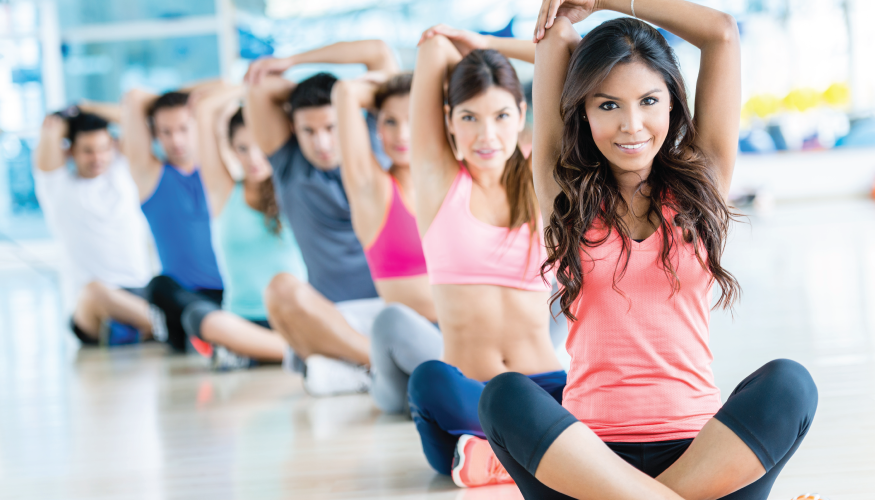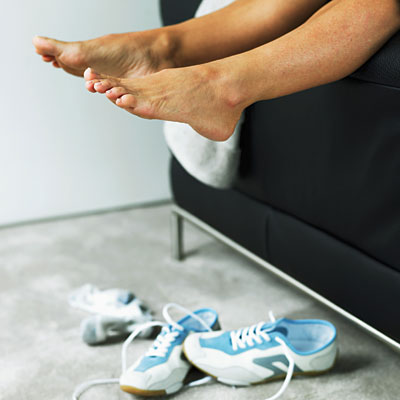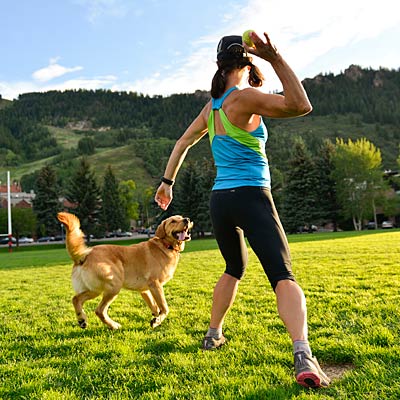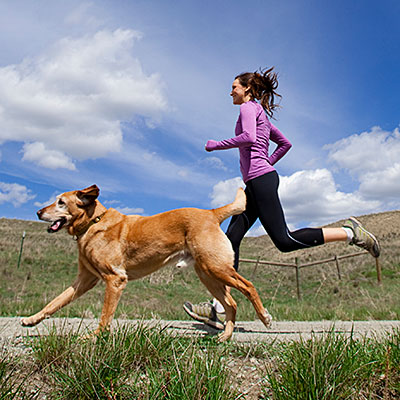Ever wonder why you spend so much time in the bathroom? It's because your urinary tract is your body's drainage system, designed to remove waste and toxins. (Think of it as your own regular natural cleanse!) Unfortunately, women are more prone to urinary problems than men, thanks to our unique anatomy, hormone changes and the effects of pregnancy and childbirth. But don't fret: Here's everything you need to know to resolve your loo-related issues.
Problem No. 1: Urinary incontinence
The lowdown: About a quarter of women leak urine when they're not actively trying to go. The most common culprits? Pregnancy and labor. "The increased weight during pregnancy puts pressure on your pelvic-floor muscles, and childbirth stretches them out, causing tears that can lead to urinary incontinence," explains Costas Apostolis, MD, director and chief of female pelvic medicine and reconstructive surgery at Akron General Medical Center in Ohio. But you can be susceptible even if you've never had a kid. "As estrogen levels decline through menopause, your urinary tract muscles weaken, making it more likely that you'll leak," Dr. Apostolis says. And while we're all about staying active, running and classes that require a ton of squatting and lifting (like CrossFit) can put stress on pelvic muscles and make the problem worse.
What it feels like: Coughing, sneezing, laughing, squatting or lifting something puts pressure on your bladder, leading to leakage—as little as a few drops or as much as a geyser.
Rx: Visit your ob-gyn. She may recommend pelvic-floor therapy to strengthen those muscles. If you're dribbling during exercise, your doctor can prescribe a device called a pessary (inserted into the vagina) or outpatient surgery to support your bladder.
Problem No. 2: Urinary tract infections
The lowdown: Blame bacteria like E. coli that invade your urinary tract, often from your stool. Your ureters, urethra, kidneys or—most often—your bladder gets infected as a result. And women can be especially vulnerable. Why? "The proximity of the rectum to the urethra in women allows for easier transmission of bacteria into the bladder," explains Courtenay K. Moore, MD, a female reconstructive surgeon at the Cleveland Clinic Glickman Urological Institute.
A tendency to get UTIs can run in families. You're also more likely to get one if you have multiple sexual partners—or are simply having sex frequently (good for you!). And you may start getting UTIs after menopause, due to declining estrogen levels in your system: "Estrogen promotes an acidic pH in the vagina, which protects against the bacteria that cause UTIs," Dr. Moore says.
What it feels like: The classic symptom is a burning sensation during and after peeing. You might also constantly feel like you have to go while only passing a small amount of urine.
Rx: See your doctor pronto: If left untreated for several days, infection can spread to your kidneys, causing permanent damage. She'll likely put you on antibiotics. And if you're truly in agonizing pain, she can also put you on a bladder-numbing drug like Pyridium.
Problem No. 3: Overactive bladder
The lowdown: OAB, or urge incontinence, makes you get a strong, sudden feeling that you need to go. "The muscles in your bladder contract involuntarily," explains Mary Rosser, MD, an ob-gyn at Montefiore Medical Center in New York City.
What it feels like: You have an immediate urge to pee. You might go as often as eight times a day, even if you're not drinking a lot.
Rx: The first line of treatment: Kegels and/or pelvic-floor physical therapy to prevent urine from leaking out of your bladder. Your doctor might recommend bladder training, which means you work on delaying going to the bathroom when you feel the need. (Don't try this without a doctor's supervision.) If that doesn't work, she may prescribe a drug that targets the beta-3 receptors on the bladder muscle, relaxing it and increasing its capacity. Botox also appears to reduce symptoms by about 50 percent.
Problem No. 4: Interstitial cystitis
The lowdown This condition acts like a UTI, but it's not really an infection at all. "Interstitial cystitis happens a lot in women who get recurrent UTIs," says Lisa Dabney, MD, a urogynecologist at St. Luke's Roosevelt Hospital in New York City. "The theory is, their bladder gets so traumatized and irritated that they begin experiencing pain even when they don't have an infection."
What it feels like Chronic pelvic pain and a persistent feeling that you need to pee.
Rx Your doctor will take a urine sample to rule out infection. If necessary, she'll perform more invasive tests to examine your bladder lining. One such test is a cystoscopy, in which a lighted scope is inserted into your urethra. Treatment usually involves avoiding foods that exacerbate the symptoms, such as caffeine or acidic fare. Pelvic-floor physical therapy can help, too. If these tactics don't work, your doctor may prescribe Elmiron, a drug that helps repair the bladder lining.
The truth about kegels
"I see a lot of women who complain that Kegels don't work, only to find that they've been doing them wrong," says pelvic-floor physical therapist Kerry Kress Levy, based in Towson, Md. To get the right squeeze:
Find the key muscles The next time you're on the toilet, stop urine midstream. The clenched sensation is a sign that you're engaging your pelvic-floor muscles. (Don't do this routinely while peeing, though—that can actually weaken the pelvic floor, Levy says.)
Repeat often Lying on the floor, tighten your pelvic-floor muscles. Hold the contraction for 5 to 10 seconds (don't stop breathing!), then relax for 5 to 10 seconds. Repeat 20 times a day, eventually working up to 100.
Keep focused While doing Kegels, put your hands on your stomach and butt to ensure that your belly, thighs and glutes aren't moving.
What your pee color really means
Transparent: You're drinking a lot of water. It's fine to be this hydrated, but you don't need to be. So if you're forcing yourself to guzzle H[subscript 2]O, you can safely cut back a bit.
Pale straw color or transparent yellow: You're well-hydrated.
Amber or honey: Your body isn't getting enough water.
Syrup or brown ale: You may be severely dehydrated. Amp up your fluid intake, and see your doctor if the color persists.
Pink to reddish: Eaten blueberries or beets recently? If not, you may have blood in your urine. It could be nothing, or it could be a sign of a UTI or other condition, so check with your doc to be sure.
Blue or green: It's probably a dye in something you ate or in a medication (like certain antidepressants and anti-inflammatory drugs), but it may also be a sign of a rare genetic disease. The condition won't kill you, but to be safe, see your doctor if the color doesn't go away.
Foaming or fizzing: This could indicate excess protein in your diet or a kidney problem. Talk to your doctor if you notice that it's happening all the time.











 Balance is the ability to maintain equilibrium when stationary
or moving.
Balance is the ability to maintain equilibrium when stationary
or moving.




 According to the Centers for Disease Control and Prevention (CDC),
the definition of physical fitness emphasises the difference between
health-related physical fitness and athletic ability physical fitness.
Its point-of-departure is the health of the US nation, which is often
referred to as the "public health perspective.
According to the Centers for Disease Control and Prevention (CDC),
the definition of physical fitness emphasises the difference between
health-related physical fitness and athletic ability physical fitness.
Its point-of-departure is the health of the US nation, which is often
referred to as the "public health perspective. 



















